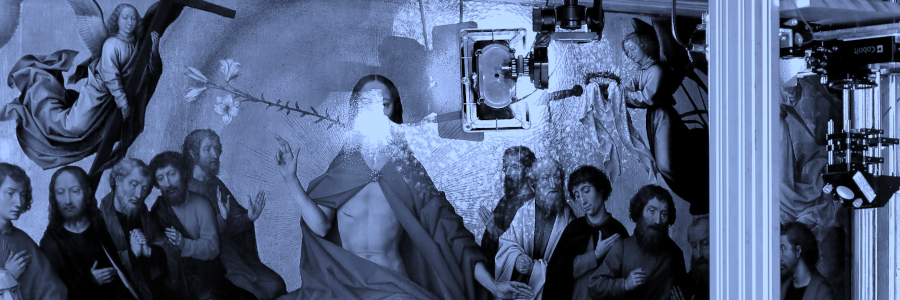
Cultural Heritage Research
Tematyka Badawcza
MAIN RESEARCH TOPICS AND METHODS
- monitoring of microclimate parameters in historic buildings and museums: air and surface temperature, relative humidity, intensity of light and UV radiation, ventilation rate and air flows, as well as flows and deposition of suspended particulate matter,
- determining experimentally properties of the materials necessary for modelling their temperature and moisture response: sorption of water vapour, moisture related swelling and shrinkage, water vapour diffusion and surface emission coefficients, tensile properties, and vulnerability of materials to fatigue failure,
- time-dependent analysis of the response of cultural objects to variations in microclimate parameters, with the use of the finite element method to model water vapour movement and the resulting strain and stress fields across objects,
- direct tracing of climate-induced physical damage as an objective assessment tool of safety of objects of art in their real-world environments, with the use of acoustic and optical methods,
- manufacturing and use in the conservation practice of Roman cements, the key materials applied to decorate buildings facades in the 19th and early 20th centuries.
MAIN ACHIEVEMENTS
- development and implementation into conservation practice of innovative local heating systems in historic churches, with minimal disturbances in the surroundings of historic equipment, participation in the development of the European standard PN-EN 15759:2011 Conservation of cultural goods — Indoor climate — Part 1: Guidelines for heating churches, chapels and other places of worship,
- determination of permissible amplitudes of fluctuations in microclimate parameters in the environment of polychrome wood by learning the detailed mechanism of hazards, participation in the development of the European and Polish Committee for Standardization PN-EN 15757:2010 standard – Maintenance of cultural goods – Requirements for temperature and relative humidity in limiting mechanical damage to organic hygroscopic materials caused by climate impact,
- development of energy-efficient strategies for climate control in museum buildings maintaining high standards of safe collection care,
- development of manufacturing technology and determining properties of Roman cements, by elucidating the reaction of calcium silicate and calcium aluminosilicates during calcination of marls, determining the hydration mechanism of cements and explaining the mechanism of shrinkage cracking in Roman cement pastes and mortars,
- applying the acoustic emission method, that is monitoring the elastic energy released as sound waves during fracture processes in materials, for direct tracing in situ damage development in wooden cultural objects, such as furniture and elements of furnishings in churches, commercial implementation of the developed prototype of an acoustic emission sensor for direct monitoring of safety of the historic objects,
- applying digital speckle pattern interferometry (DSPI) for diagnosing the condition of painted surfaces also in situ in museums and historic churches, through analysis of sound-induced vibration of the investigated surface, making possible the detection of cracks and delaminated parts, visualization of the spatial distribution of surface vibration to present optimally results of the analysis to conservators and curators.